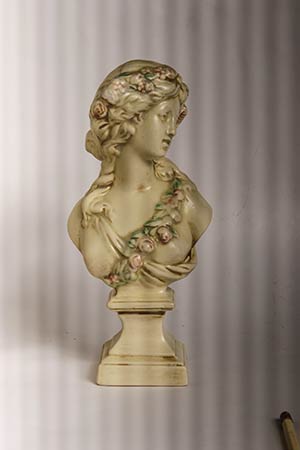Despite different names, both protocols are virtually identical, but again high speed sync FLASH is not useful for motion stopping, and the OP wants a flash unit that can stop fast-moving subjects.
Thanks for the great info Derrel, really interesting read. It makes sense that you might not be able to freeze motion using just the flash duration of these cheaper flashes, but why couldn't you freeze motion using the faster shutter speeds that HSS would afford you? Are they just not bright enough to be used as a primary light source at such fast shutter speeds?
Depends what the user really wishes to achieve. Does the OP want FILL-in light for the shadows, on static people, in bright sunlight? THAT is what High Speed Synch does best. If the OP wants short-duration,
SINGLE-pop flash that will reach out to 30 or 40 or 50 feet, he needs another option besides a whimply little speelight using HSS or Auto FP Synch flash.
The problem with HSS or Auto-FP Synch flash lighting lies in what is
the key light, and what is the "
fill" light...in my experience with telephoto lenses on moving models in sunlight, the Nikon Auto FP Synch, at shutter speeds of 1/1000 to 1/4000 on the Nikon D2x or D3x camera with the SB-800 and 200mm VR and 135 DC lenses, at wider f/stops like f/2, or 2.5,or 2.8 or even f/3.5, the KEY light is the sunlight....the shadows are filled in by basically, continuous, discrete, very brilliant, hard-edged, direct flash, shot thrugh a Fresnel lens that narrows the beam angle to suit the telephoto lens and its narrow angle of view. End result? A MESS. Ugly images, with a faint smearing in the shadows, if the model is even walking or turning her head. The motion-stopping effect of FP Synch is verrrrry weak.
The problem is the delta, or difference, between the sunlight, and the fill-in light the flash provides. If the key and shadow lights are close, the images may show a veil of un-sharpness. Again: worse on close-ups shot with high-end teles, less noticeable on say, wedding shots with 10 people in them. HSS is a recipe for potential disasters, in some scenarios, especially outdoors, in bright light.
But, why do we even want HSS flash tech anymore? With MODERN sensors, like those in the D3x, D600,D800,D750 line (sony Exmor or newer sensor tech), with 14 to 14.7 EV of scene DR, there's no longer nearly the need for shadow fill-in that we had years ago, when HSS sync was invented. Today? Shoot for the highlights, and LIFT the shadows in software. We no longer have to worry about a 6- or 7-EV total range at the capture medium, on 1990's color slide film. The absolute, pressing need for shadow fill-in via an on-camera flash unit, something critical 15 to 20 years ago, is now long in the past. Flash can add eye-sparkle, yes, but we are past the time when we utterly NEEDED shadow fill-in, for most situations.
I think the big issue is the name, "
High Speed Sync": it fools people into thinking it is good for stopping fast-action. The more-telephoto the shots, the worse Auto FP Synch/ HSS actually looks...in a wide-angle shot at 20,24,35,or 50mm lens length, the degree of blurring is hidden. Try it on a bird coming in for a landing at a feeder, or a close-up of a walking or running model with a 200 or 300mm lens....UGHHH! Stroboscopic flash, firing acros the entire time the shutter is moving....Uggg...can easily look bad on close-in, high-resolution sensors with critically sharp telephoto lens pictures. Again, consider the ratio of the sunlight and the flash, and how much each contributes to the total exposure; if both are "significant" parts of the exposure, you get
part shot with sunlight, and the other part lighted by the output of
a stroboscopically firing speedlight, which is a TINY, focused, pin-point light source perhaps 1 x 3 inches in total size. At the sharp highlight/shadow transitions, like along the nose, there can easily be an objectionable ghost or secondary imaging line, even at 1/2500 second, in bright light.
If one wants FAST!, short flash duration, to freeze motorbikes, or skateboards, or other fast-moving things, a very short, quick, Pop! of SINGLE-burst flash is the optimal solution... the best choices will be
powerful flash units with high output (monolight flash units,for example) for anything that is at any distance from the camera. Using a PC cord, to connect the camera to the flash, it's possble to shoot on the "tail end" of flash pops from conventional, old-school monolights, like Alien Bees, with old-school cameras like the Nikon D70 and D40, or the old Canon 1D. This is a realllllllly inexpensive way to get both shadow Fill-In flash for shadows, brief flash for motion-stopping, and also and this is key, a fast shutter speed that allows the photographer a way to make the sky under-exposed, via shutter speed on the camera. This is why high-end skateboard and motorcycle jumping specialists are still some of the last people relying on ancient D70 cameras, or cheap D40 cameras: they give you something newer CCD-sensor cameras lack.
The desired look in a lot of action sports, one of deliberately under-exposing the sky, through a fast shutter speed and a relatively small to medium f/stop (like f/7.1 or f/8) creates a foreground motorbike, or jumping snowboarder, or skateboarder who is stopped by the flash, and lighted by the flash...the flash never reaches the backdrop, so this style of photo is something that is actually best achieved using older-tech gear. By shooting say at f/7.1 at 1/4000, a deep, dark, dramatic sky can be achieved, with zero PS work, right in-camera.




![[No title]](/data/xfmg/thumbnail/31/31757-4f5257d19be4e34c6bdcbd2519380d53.jpg?1734160480)







![[No title]](/data/xfmg/thumbnail/32/32181-195f34b5d304506aafc7ec317f64563f.jpg?1734161047)
![[No title]](/data/xfmg/thumbnail/36/36395-66eaff4565ecf4245f13a9c469a9273b.jpg?1734168775)